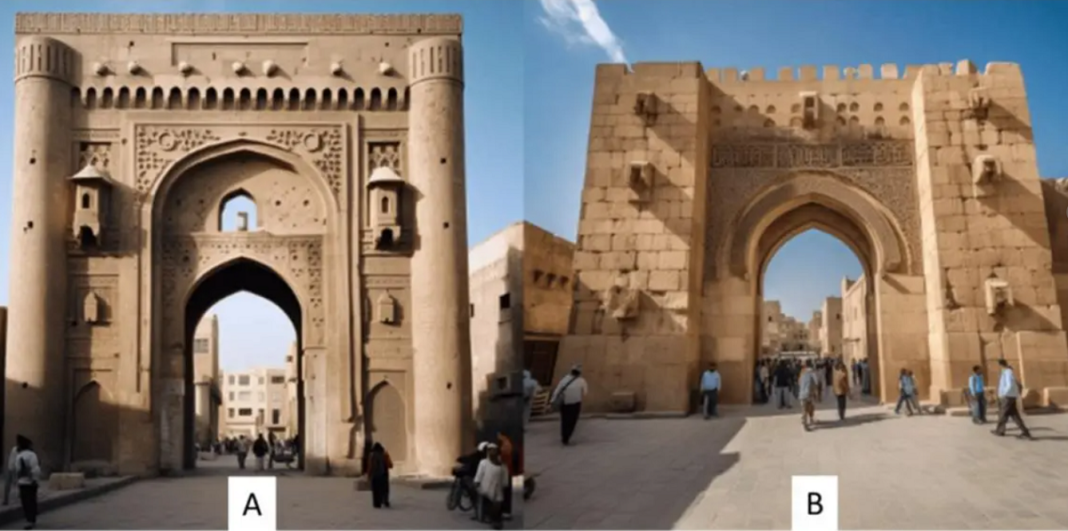According to Sharjah University’s Dr Ahmad Sukkar, AI generated images have revolutionized architectural design processes, however there are limitations when it comes to capturing cultural nuance.
Images generated by AI have revolutionized architectural design processes, offering architects the ability to produce highly sophisticated and imaginative designs.
Commenting on the technology, Sharjah University Department of Architectural Engineering Dr Ahmad W Sukkar says that in recent years, the widespread adoption of AI-image generators like Stable Diffusion and Midjourney gives architects the ability to produce sophisticated and imaginative designs.
However, according to a recent report, in spheres immersed with culture, sensitivity and religion as in the case of Islamic architecture, AI-generated depictions usually fail to correctly present the nuanced understanding of historical Islamic elements and their interpretations.
“There are many examples found online that reveal a blending of limited historical knowledge with inadequacies in the datasets used by AI image generators. In fields as culturally and historically sensitive as Islamic architecture, the integration of AI technology requires careful consideration,” says Dr Sukkar.
AI models like Stable Diffusion and Midjourney claim to excel in creating artistic and architectural images and designs with nuanced qualities rich in texture and detail in addition to their ability to create stylized content and realistic visual imagery. They assist artists and architects to produce unique photorealistic images from text and image prompts.
The report acknowledge that AI tools are capable of generating designs inspired by traditional Islamic architecture styles, but at the same time believe that navigating the intersection of AI and Islamic architecture presents architects with both opportunities and challenges.
“It is necessary to use AI tools cautiously. While it can offer new possibilities and inspiration, it needs to be supported by human expertise and a deep understanding of the principles and traditions of architecture in the Islamic context. The human touch, craftsmanship, and cultural sensitivity integral to architecture in this context should be preserved and not be overlooked. Striking a balance is crucial, and AI should be seen as an advanced tool to augment human creativity rather than replace it entirely,” says Dr Sukkar.
Dr Sukkar argues that AI-generated images may not capture the intangible aspects of heritage, such as cultural practices, rituals, or oral traditions, as these often go beyond empirical perception and encompass symbolic dimensions.
“In its current development stage, AI struggles to fully capture the depth and complexity of these elements, which are often intertwined with personal and subjective experiences. Our research delved into the intriguing intersection of AI and Islamic architecture, exploring how AI technologies can generate images of Islamic architectural heritage. Our investigation reveals both the immense potential and significant limitations of these AI systems. Through careful examination and comparison with historical sources, we have identified several factors that contribute to these discrepancies, including limitations in the prompt used to generate the images, challenges in accurately capturing regional and historical styles, and difficulties with architectural elements and details,” says Dr Sukkar.
The report includes images of some of the most renowned Islamic architectural wonders and presents an IA image parallel to natural and original depictions of the same structure and points out the differences.
According to Dr Sukkar, the technology falls short of encompassing inclusivity and diversity, which poses a significant limitation for users worldwide.
“The inability to obtain precise visual representations of specific landmarks hinders the meaningful utilization of technology. The underlying reason for this limitation lies partially in the generic training dataset of generative artificial intelligence programs and services like Midjourney, which lacks adequate recognition of regional and cultural variations,” says Dr Sukkar.
Asked what drove him to address such a sensitive topic, Dr. Sukkar says that by highlighting the current limitations of AI-generated representations of Islamic architecture, it would encourage further research and development in this area.
“Ultimately, our work contributes to a deeper understanding of the evolving relationship between technology and cultural heritage, paving the way for more accurate and faithful representations of Islamic architectural traditions in the digital age. Text-to-image AI generators can create visually striking images inspired by Islamic architecture, however, they often fall short of accurately depicting the original structures. This may be due to either constraints of the prompt, issues with frame representation, challenges in capturing regional and historical styles, and difficulties with architectural elements and details,” says Dr Sukkar.






